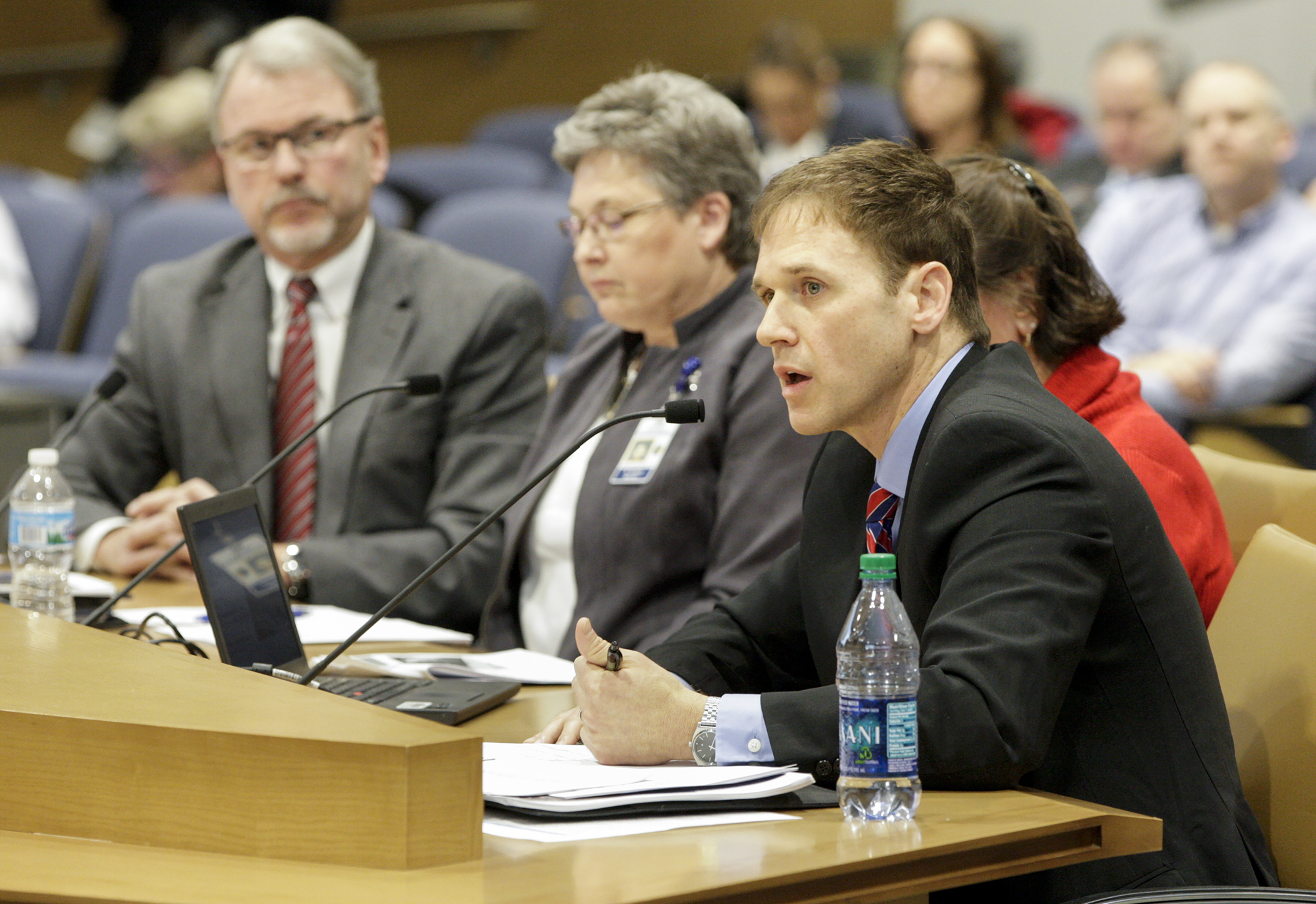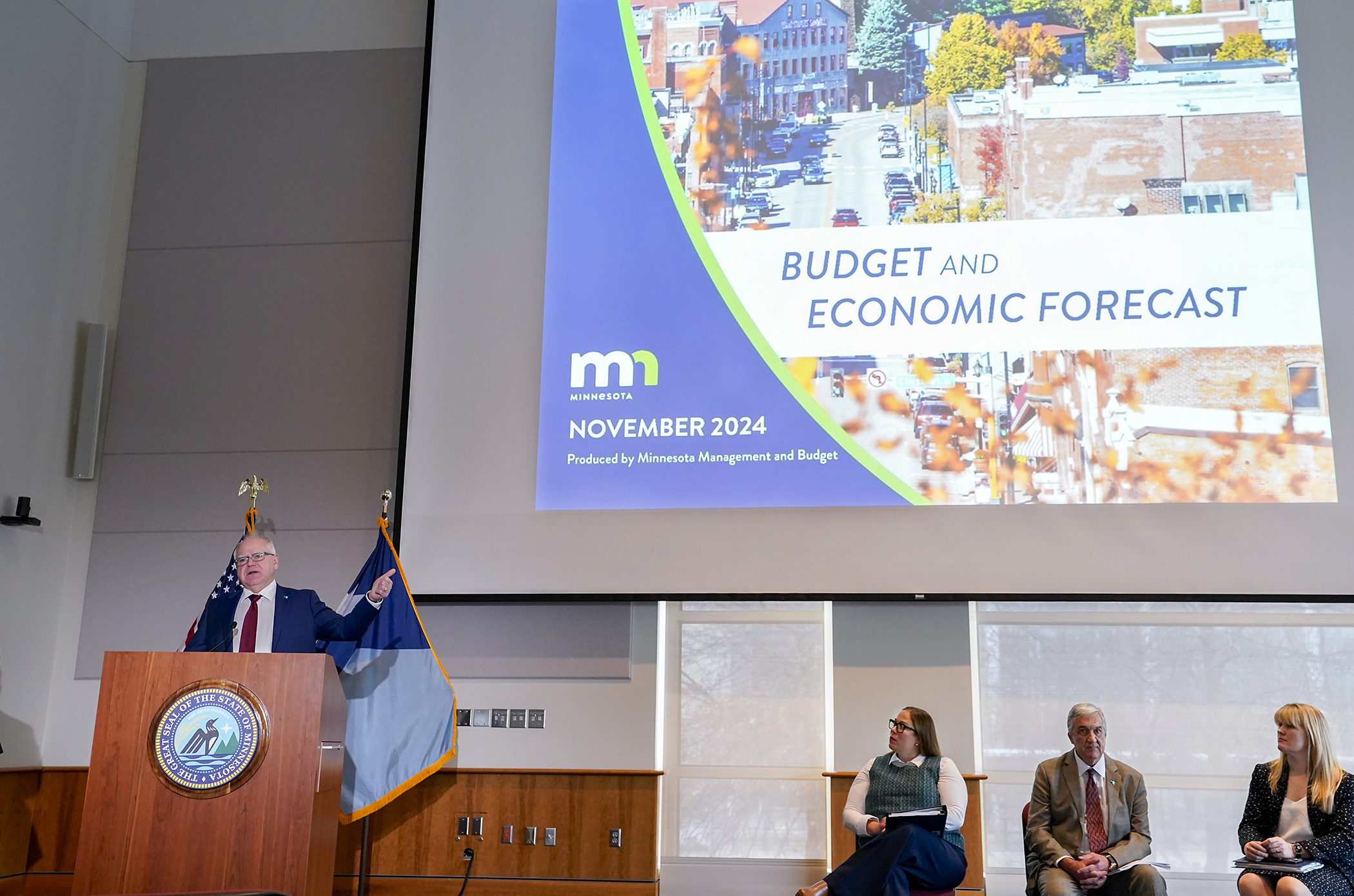Task force looks at Corrections Department treatment options, successes

Part of the Department of Corrections mission is to “reduce recidivism by promoting offender change.”
How that is accomplished was the theme of Friday’s Prison Population Task Force meeting.
Co-chaired by Rep. Tony Cornish (R-Vernon Center) and Sen. Ron Latz (DFL-St. Louis Park), the informal group hopes to get in-depth information to help craft recommendations for the 2016 legislative session to deal with prison overcrowding. No action was taken.
It is estimated that nearly 70 percent of state inmates participate in programming, work and education, with 49 percent taking part in recidivism-reduction programming.
Dr. Grant Duwe, the department’s research director, noted that effective interventions are important. He cited data showing an up to 33 percent reduction in recidivism for inmates who participate in an intervention program, while when prisoners get no such programming the recidivism risk increases by 15 percent.
Roughly 85 percent of offenders entering the Department of Corrections system are chemically abusive and/or dependent, and that participation in a chemical dependency treatment program has been shown to reduce recidivism by 17-25 percent.
Offender treatment can range from the short-term chemical dependency Rivers Program at the St. Cloud prison for offenders with five-to-seven months remaining on their sentence to longer options, such as the 18-month intensive, boot camp-style Challenge Incarceration Program in Willow River and Togo for non-violent offenders.
Participation in various programs has shown recidivism reductions of:
- Challenge Incarceration Program: 32-35 percent;
- Educational programming: 14-24 percent;
- Employment programming: 14-16 percent;
- Prison Visitation: 13-25 percent; and
- Sex offender programming: 12-27 percent.
While the numbers are promising, there is great concern that the demand outweighs the necessary capacity and resources.
“We aren’t meeting treatment needs and that varies from program to program,” said Corrections Commissioner Tom Roy. “There are incredible needs in many, many areas.”
Although no specific funding requests were shared at the task force meeting, Gov. Mark Dayton’s bonding proposal released Friday calls for an additional $3.5 million to expand the 295-bed Challenge Incarceration Program by 45 beds. Roy said the demand exists to fill all the proposed additional beds.
The task force is next scheduled to meet Feb. 24 with a more in-depth focus on treatment resources.
Related Articles
Search Session Daily
Advanced Search OptionsPriority Dailies
Ways and Means Committee OKs House budget resolution
By Mike Cook Total net General Fund expenditures in the 2026-27 biennium will not exceed a hair less than $66.62 billion.
That is the budget resolution approved Tuesday by the House Ways...
Total net General Fund expenditures in the 2026-27 biennium will not exceed a hair less than $66.62 billion.
That is the budget resolution approved Tuesday by the House Ways...
Minnesota's budget outlook worsens in both near, long term
By Rob Hubbard It looks as if those calling for less state spending could get their wish, judging from Thursday’s release of the February 2025 Budget and Economic Forecast.
A state su...
It looks as if those calling for less state spending could get their wish, judging from Thursday’s release of the February 2025 Budget and Economic Forecast.
A state su...